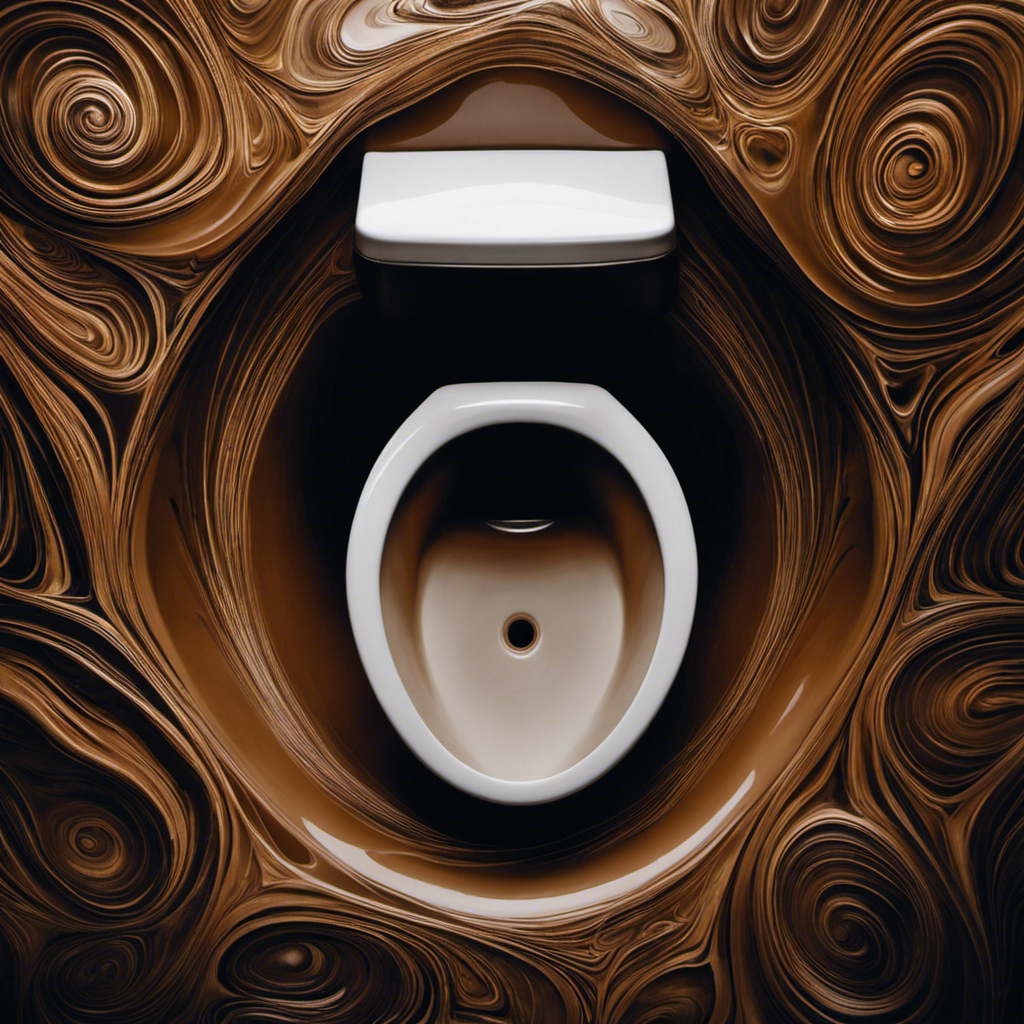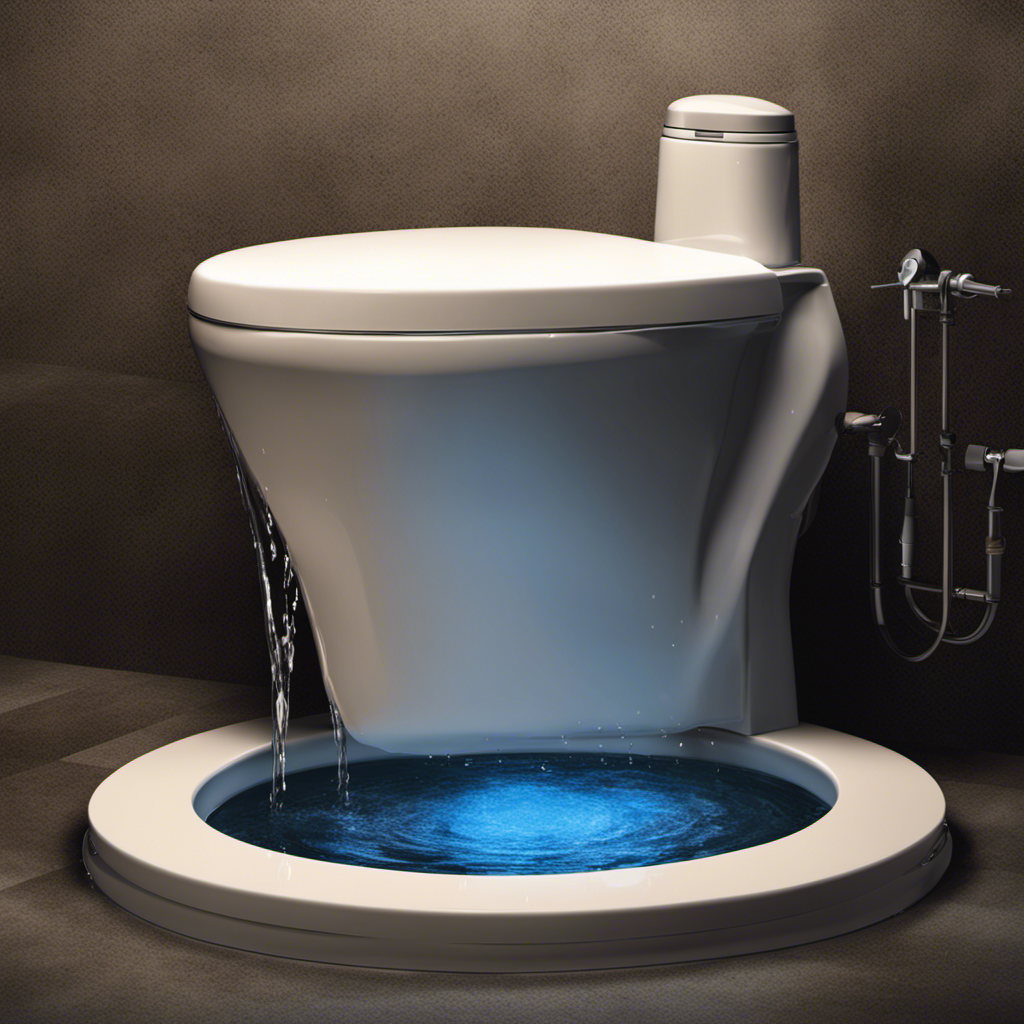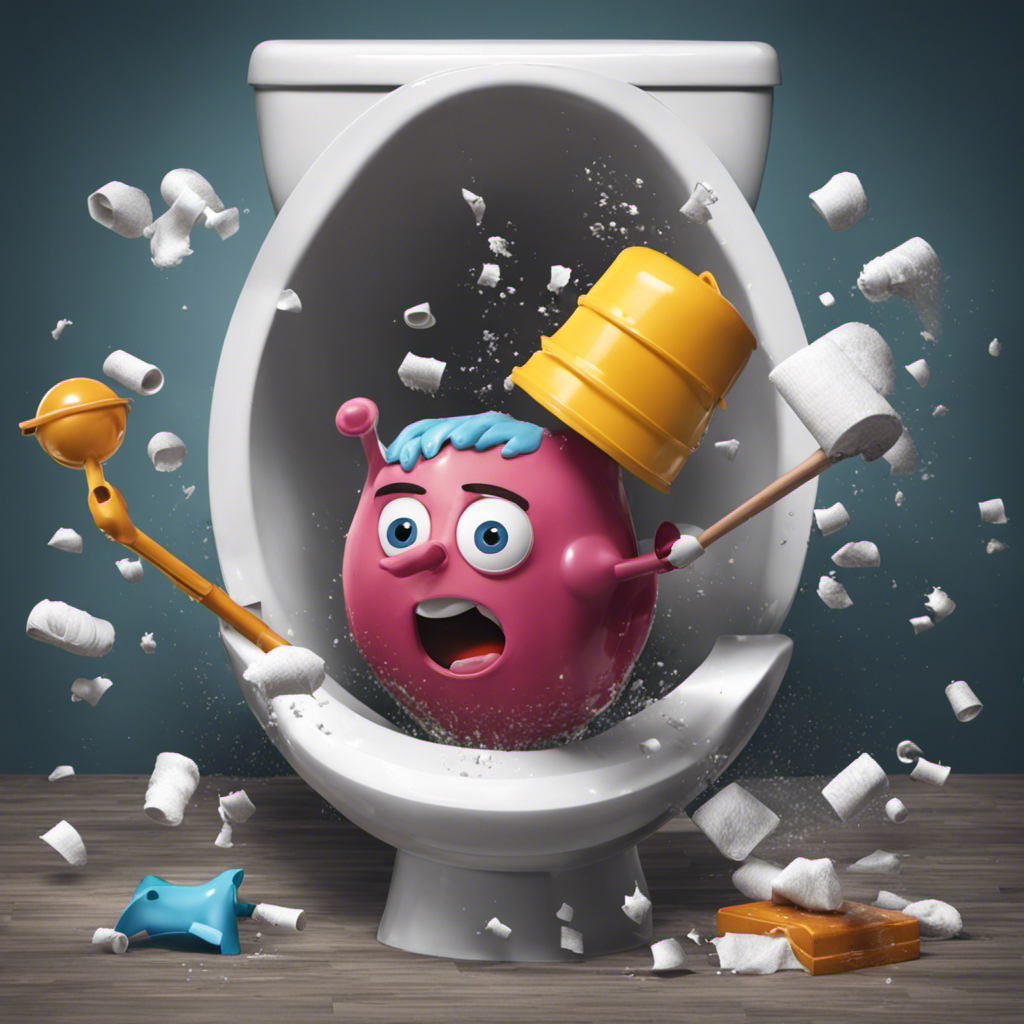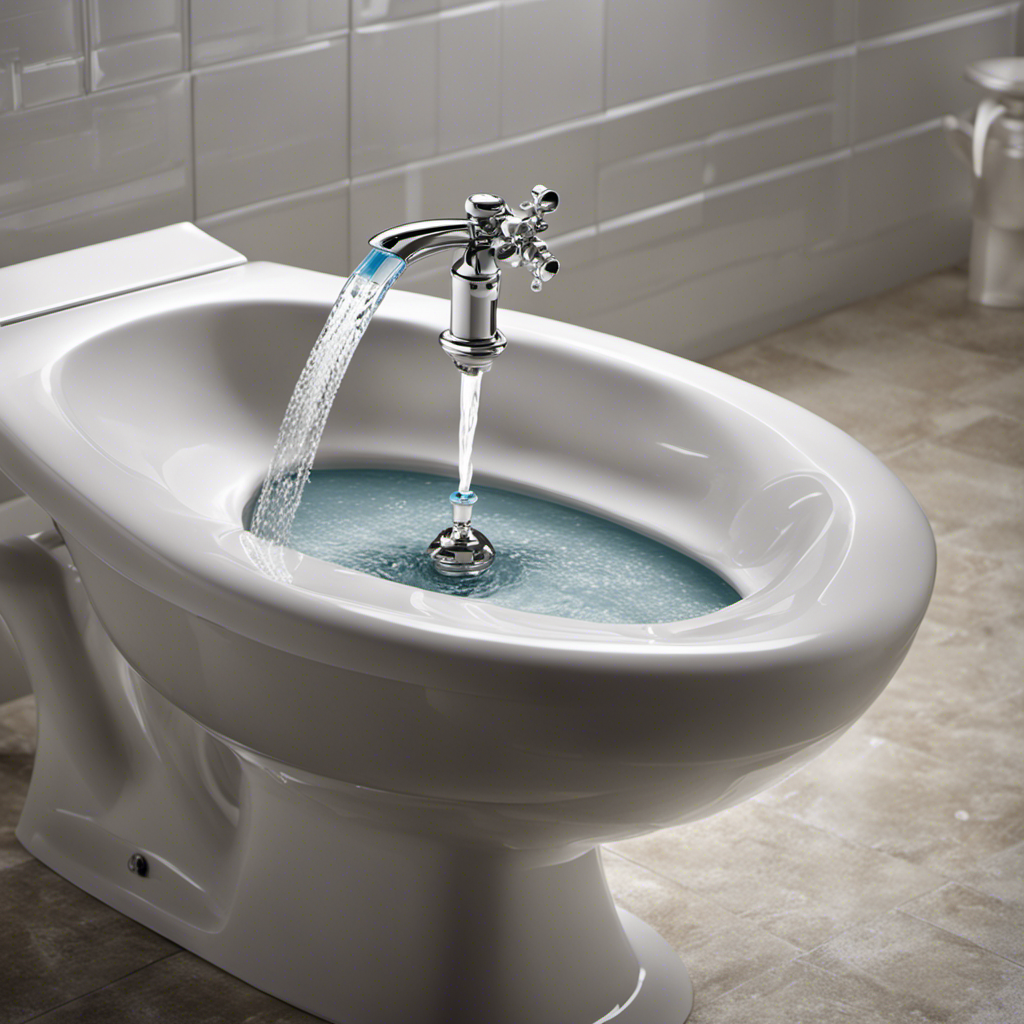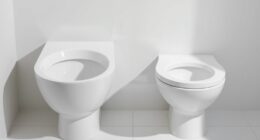As a plumbing professional, I’ve encountered countless cases of discolored toilet water. But what exactly causes that unsightly brown hue?
In this article, we’ll explore the common culprits behind brown toilet water, from plumbing issues to potential health concerns.
I’ll also provide you with tips on how to identify and fix this problem, as well as preventive measures to keep your toilet water clear and clean.
So, if you’re tired of flushing away brown water, keep reading for all the answers you need.
Key Takeaways
- Brown toilet water can be caused by a buildup of minerals in the pipes or contamination from minerals like iron and manganese.
- Plumbing issues such as rust buildup in pipes, corroded pipes releasing rust particles, and sediment accumulation in the water heater can also cause discolored water.
- Brown toilet water may pose potential health concerns, including bacterial contamination, gastrointestinal issues, and chemical contamination with lead, copper, or rust particles.
- To identify and fix brown water in the toilet, one can check the water supply for sediment or rust, conduct DIY testing, flush the toilet multiple times, and inspect the toilet bowl for stains or deposits.
Common Causes of Brown Toilet Water
One of the most common causes of brown toilet water is a build-up of minerals in the pipes. Toilet water contamination can occur when minerals like iron and manganese dissolve in the water supply. These minerals can accumulate in the pipes over time, leading to a discoloration of the water that comes out of the toilet.
The impact of water quality on toilet appearance is significant, as it can affect the overall cleanliness and aesthetic of the bathroom. Additionally, the presence of minerals in the water can also lead to stains on the toilet bowl and fixtures.
Regular maintenance and cleaning of the pipes can help prevent the build-up of minerals and ensure clear, clean water in the toilet.
Plumbing Issues That Cause Discolored Water
If you notice discolored water coming from your plumbing, it could be caused by various issues. One common sign of discolored water is a brown or rusty color. This can be alarming, but there are DIY solutions to help address the problem.
One possible cause of discolored water is rust buildup in your pipes. Over time, minerals in the water can corrode the pipes, leading to rust particles being released into the water supply. Another potential cause could be a problem with your water heater. Sediment can accumulate at the bottom of the tank, causing the water to become discolored.
In both cases, flushing your plumbing system can help remove the discolored water. However, if the problem persists, it is recommended to seek professional help to identify and fix the underlying plumbing issue.
Potential Health Concerns With Brown Toilet Water
If you notice discolored water in your toilet, it is important to be aware of potential health concerns that could be associated with this issue. Brown water in the toilet may indicate potential contamination and should not be ignored.
Here are a couple of reasons why brown water could pose health risks:
-
Bacterial Contamination: The presence of bacteria in the water supply can cause gastrointestinal issues and other illnesses if consumed or if it comes into contact with your skin.
-
Chemical Contamination: Brown water may contain chemicals such as lead, copper, or rust particles, which can be harmful if ingested or absorbed through the skin.
To ensure the safety of your household, it is crucial to address the issue promptly. In the next section, we will discuss how to identify and fix brown water in the toilet, including steps to improve water treatment and prevent potential health risks.
How to Identify and Fix Brown Water in the Toilet
To identify and fix brown water in the toilet, you should start by checking the water supply for any visible issues. Look for sediment or rust in the water, as this can cause discoloration. If there are no visible problems with the water supply, the issue may lie within the toilet itself. DIY toilet water testing can help determine the cause of the discoloration. Here is a simple table to guide you through the process:
| Test | Procedure | Result |
|---|---|---|
| 1 | Flush the toilet multiple times | If the water continues to be brown, the issue is likely with the toilet |
| 2 | Fill a clear container with water from the toilet tank | If the water in the container is clear, the problem is likely in the bowl |
| 3 | Inspect the toilet bowl for stains or deposits | Stains or deposits indicate a build-up of minerals or bacteria |
Preventive Measures to Keep Toilet Water Clear and Clean
One way you can keep your toilet water clear and clean is by regularly cleaning the bowl and tank. This helps to prevent discoloration and maintain the overall cleanliness of your toilet.
Here are some preventive measures you can take:
- Clean the bowl and tank using a toilet bowl cleaner or vinegar solution. Scrub the surfaces thoroughly to remove any stains or buildup that can cause discoloration.
- Flush the toilet regularly to ensure fresh water is circulating and preventing stagnation.
- Check for any leaks or cracks in the toilet tank or bowl, as these can lead to water discoloration.
- Avoid using harsh chemicals or cleaners that can damage the toilet and contribute to water discoloration.
- Consider installing a water filtration system or using a water softener to improve the quality of the water and prevent discoloration.
Conclusion
In conclusion, brown toilet water can be caused by a variety of factors, including plumbing issues and potential health concerns. Identifying and fixing the issue is crucial to maintaining a clean and sanitary bathroom environment.
By implementing preventive measures, such as regular maintenance and proper cleaning techniques, you can ensure that your toilet water remains clear and clean.
While the topic of brown toilet water may not be the most pleasant, understanding its causes and solutions can help you overcome any initial discomfort and ensure a more enjoyable bathroom experience.
